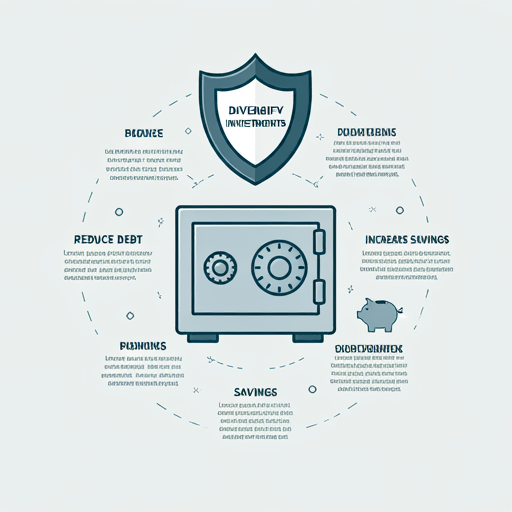Introduction to Inflation and Its Impact on Savings
Understanding Inflation: Causes and Effects
Inflation is the rate at which the general level of prices for goods and services rises, eroding purchasing power. This phenomenon can significantly impact savings, as the real value of money diminishes over time. When inflation outpaces interest rates on savings accounts, individuals effectively lose money. It’s crucial to understand this dynamic. Many people overlook this risk.
Moreover, inflation can lead to increased costs of living, forcing individuals to allocate more of their income to essential expenses. This shift can limit the ability to save for future goals. Financial literacy is essential here. Knowledge empowers better decisions.
Investing in assets that typically outpace inflation, such as stocks or real estate, can be a prudent strategy. Diversification is key to mitigating risks. A well-rounded portfolio can provide stability.
The Current State of Inflation in the Economy
The current economic landscape is marked by rising inflation rates, significantly affecting consumer behavior and purchasing power. This trend has been driven by supply chain disruptions and increased demand post-pandemic. Many people are feeling the pinch. As prices for essential goods and services escalate, the real value of savings diminishes. This is a critical concern for financial planning.
Central banks are responding with interest rate adjustments to combat inflation. However, these measures can take time to influence the economy. Patience is essential in this context. Investors are increasingly seeking assets that can provide a hedge against inflation, such as commodities and real estate. Diversification remains a prudent strategy. It’s vital to stay informed about market trends.
The Role of Cryptocurrency in Inflation Hedge
How Cryptocurrencies Function as a Store of Value
Cryptocurrencies are increasingly viewed as a viable store of value, particularly in times of economic uncertainty. This perception stems from their decentralized nature, which protects them from government manipulation. Many investors seek alternatives. Additionally, the limited supply of certain cryptocurrencies, like Bitcoin, creates scarcity, enhancing their value proposition. Scarcity drives demand.
Moreover, cryptocurrencies can provide a hedge against inflation, as they are not directly tied to traditional fiat currencies. This independence allows them to maintain value when inflation erodes purchasing power. It’s a compelling argument. As more individuals and institutions adopt cryptocurrencies, their legitimacy as a store of value strengthens. Awareness is growing rapidly.
Comparing Cryptocurrencies to Traditional Assets
When comparing cryptocurrencies to traditional assets, several key differences emerge. Cryptocurrencies offer a decentralized structure, which contrasts sharply
Strategies for Protecting Your Savings Against Inflation
Diversifying Your Investment Portfolio
Diversifying your investment portfolio is essential for protecting savings against inflation. By spreading investments across various asset classes, you can mitigate risks associated with market volatility. Consider the following strategies:
Each asset class serves a unique purpose. This approach enhances overall portfolio resilience. A balanced portfolio is crucial. Regularly review and adjust allocations based on market conditions. Staying informed is vital for success.
Utilizing Stablecoins for Stability
Utilizing stablecoins can provide a strategic approach to maintaining stability in your investment portfolio. These digital currencies are pegged to traditional assets, typically fiat currencies like the US dollar. This peg helps mitigate volatility, making them a reliable option during inflationary periods. Many investors prefer this stability.
To in effect use stablecoins, consider the following strategies:
These actions can help preserve capital. Understanding the mechanics of stablecoins is essential. They offer a bridge between traditilnal finance and the cryptocurrency market . Awareness is key for effective management.
Long-Term vs. Short-Term Strategies
Assessing Your Financial Goals and Risk Tolerance
Assessing your financial goals and risk tolerance is crucial for developing effective investment strategies. Understanding whether you are focused on long-term growth or short-term gains will shape your approach. Long-term strategies often involve higher risk assets, which can yield substantial returns over time. This approach requires patience and discipline. Short-term strategies, on the other hand, prioritize liquidity and quick returns. They often involve lower risk but may yield littler profits.
To align your investments with your goals, consider the following:
These steps can enhance your financial planning. Awareness of your risk tolerance is essential. It guides your investment choices effectively.
When to Shift Strategies Based on Market Conditions
Shifting investment strategies based on market conditions is essential for optimizing returns. When markets are bullish, long-term strategies may yield significant gains. This environment encourages risk-taking and capitalizing on growth opportunities. Conversely, during bearish markets, a shift to short-term strategies can help preserve capital. This approach focuses on liquidity and minimizing losses.
To determine when to shift strategies, consider the following indicators:
These actions can inform your decision-making process. Staying adaptable is crucial in volatile markets. Awareness of changing conditions is key.
Conclusion: Taking Action to Safeguard Your Financial Future
Recap of Key Strategies Discussed
In reviewing the key strategies discussed, he should focus on diversification, utilizing stablecoins, and assessing his financial goals. Diversification across asset classes can mitigate risks associated with market volatility. Utilizing stablecoins provides a buffer against inflation, ensuring liquidity during uncertain times. This strategy is increasingly popular among investors.
Additionally, he must regularly assess his risk tolerance and market conditions. Adapting strategies based on economic indicators is crucial for optimizing returns. Staying informed about market trends can lead to better decision-making. Awareness is essential for financial success. Taking proactive steps today can safeguard his financial future.
Encouragement to Stay Informed and Adapt
Staying informed and adapting to market changes is essential for financial success. Regularly reviewing economic indicators can provide valuable insights. This practice helps in making informed decisions. He should consider subscribing to financial news sources. Knowledge is power in investing.
Additionally, participating in webinars and workshops can enhance understanding. Engaging with financial communities fosters valuable discussions. This interaction can lead to new strategies. He must remain flexible in his approach. Adapting to new information is crucial. Awareness of trends can significantly impact outcomes.

Leave a Reply